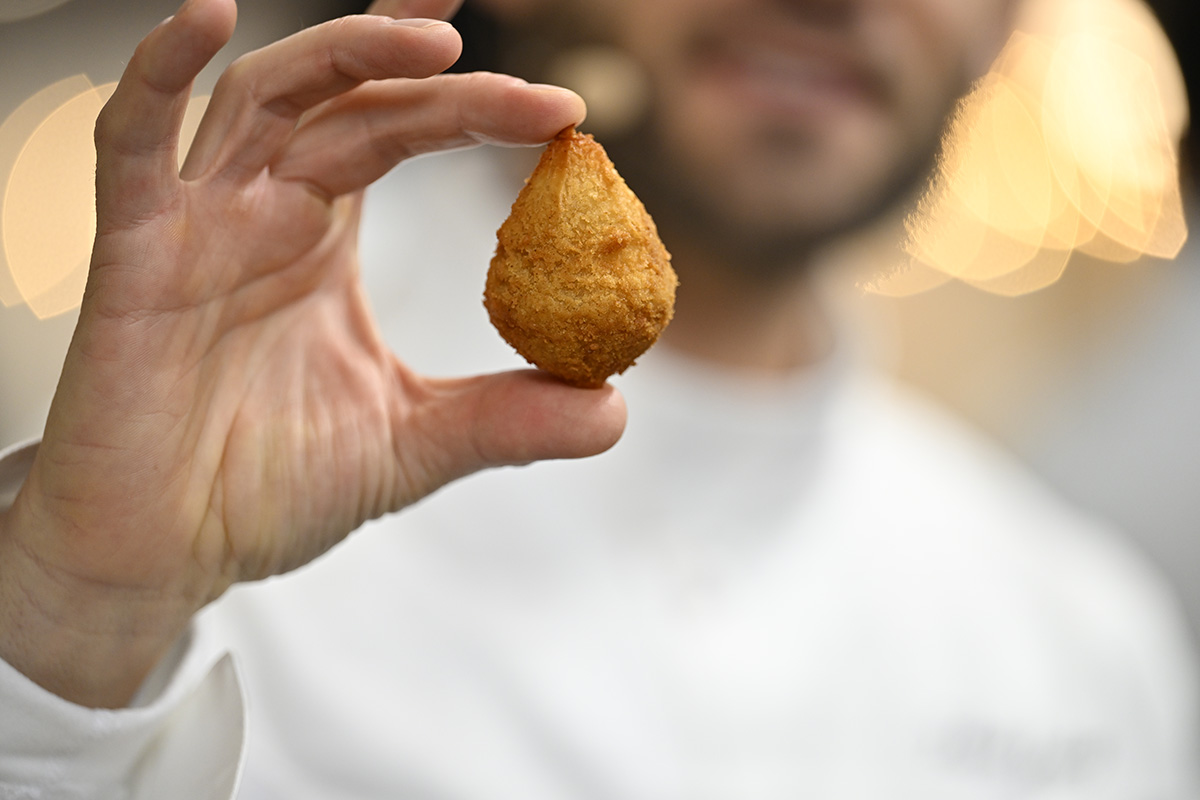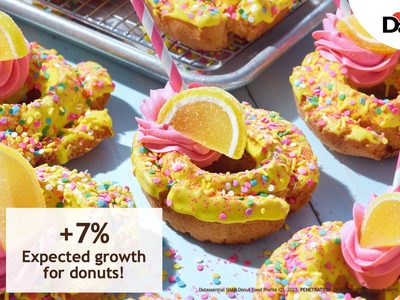Bakery consumers are seeking comfort and quality more than ever. Those that pay attention to these two signs are winning a greater slice of the bakery pie.
Of note, the Specialty Food Association (SFA) Trendspotter Panel navigated thousands of specialty food products showcased by more than 1,000 exhibitors at the Las Vegas Convention Center. After great deliberation through countless products, five overall trends have emerged from the 2024 Winter Fancy Food Show.
Ranking first among the 2024 trends, plant-based passport flavor innovations abound as global comfort foods appeal to vegan and vegetarian audiences with plant-based ingredients.
Other influential trends identified at the Fancy Food Show include “Fruits as Snacks.” Whether enjoyed on their own, elevated with an indulgent ingredient, or used in an inventive way, nature’s candies are breathing new life into snacking occasions. “We’re seeing a push away from highly processed foods and a return to fruit as snacks,” said Trendspotter Jonathan Deutsch, professor and director, Drexel Food Lab.
The Winter Fancy Food Show Trendspotters included Patsy Ramirez-Arroyo, food and sustainability consultant, PG Consulting Group, LLC; Jenn de la Vega, chef, stylist, cookbook author, trends expert, Randwiches; Jeanette Donnarumma, producer, cook, recipe developer/tester, food lover, content creator, party-planner; Sarah Lohman, culinary historian, author, and public speaker; Chef Clara Park, claraparkcooks.com, chef, teacher, consultant and writer; Wendy Robinson, program manager and senior buyer, Market Hall Foods; Kantha Shelke, Ph.D., CFS, IFT Fellow, Corvus Blue LLC; Cathy Strange, Ambassador of Food Culture, Whole Foods, V. Sheree Williams, publisher, Cuisine Noir, and founder, Global Food and Drink Initiative.
“New Takes on Classics is another trend. Many of the new products on the Fancy Food Show floor “combine innovation with a classic twist,” said Trendspotter Patsy Ramirez-Arroyo. Examples include Cookies con Amore Glutenetto gluten-free cookies.
“The Winter Fancy Food Show gave participants an advance look at the year ahead in specialty foods. Thanks to our Trendspotters, as well as many other experts and influencers who joined us in Las Vegas, our Show provides crucial insights and forecasting at the start of the food industry's annual cycle. Trends at last month’s Show included comfort foods from around the globe prepared using plants rather than animal-based ingredients; fruits as part of a snacking occasion and a prevalence of the Japanese citrus fruit yuzu, in particular; and elevated takes on classic favorites,” said SFA president Bill Lynch.
Demand drivers
Bill Heiler, senior manager, Customer Marketing at Rich Products, points out that Rich Products surveys and interacts with thousands of shoppers each year to understand the drivers of demand, shifting priorities and eating occasions.
“In our latest shopper study (August 2023) we asked, ‘What are your five top reasons for buying from the fresh bakery department instead of pre-packaged bakery items in other parts of the store?’ From a list of 18 possible responses, the top 5 were better taste, freshness, better quality, and tastes and looks like homemade. The two responses that include ‘homemade’ implies the convenience of fresh bakery versus baking your own item or items at home.”
These purchase drivers set the bar very high for fresh bakery departments and suppliers, and they apply to both celebratory purchases like decorated cakes, as well as bakery items that elevate the everyday, like artisan breads and cookies, Heiler explains.
The role of convenience
 Source: Sirha Europain
Source: Sirha EuropainConvenience certainly influences purchases in fresh bakery. Rich’s shopper insights research puts convenience on par with promotions and competitive everyday prices in terms of attributes that influence purchases the most.
Convenience has been a main focus for retailers and suppliers looking to increase consumer occasions for fresh bakery. In the past five years, sales of convenient grab ‘n go bakery products like parfait cups and cake slices have grown 50%, according to NielsenIQ retail data.
“We’re also seeing retailers become more creative with merchandising to grow those purchase occasions by making convenient, single-serve items available in prepared foods and meal solution displays,” Heiler explains.
Bake-at-home is another opportunity to deliver on convenience for consumers who want fresh baked artisan quality breads, cookies and other bakery solutions on-demand at home. This is particularly important as consumers are having more meals at home to control food spending. Restaurant inflation has far outpaced food at-home inflation since April of last year, so fresh bakery solutions that conveniently deliver restaurant quality food experiences are another opportunity for growth.
Another aspect of convenience to keep in mind is providing consumers with what they want, when and where they want it. Whether it’s in the physical store or on digital shopping platforms, it’s important to have items in-stock at peak shopping times. FMI’s 2023 Power of In-store Bakery report notes that 75% of fresh bakery shopping is done between 10 a.m. and 5 p.m.
“In convenience stores, we also know that 1 p.m. to 4 p.m. is the peak snack purchasing window (from Datassential’s 2023 snacking keynote). Given ongoing labor constraints in fresh bakery, further finished and portion-sized solutions have been a focus for Rich’s to help our customers take advantage of impulse snacking occasions without putting additional strain on bakers and decorators,” Heiler explains.
Growth opportunities
Speaking in the Feb. 22 webinar, Top Trends in Fresh: Seizing the Opportunity in How We Shop and Eat Today, experts from Circana and the Food Marketing Institute (FMI) revealed growth opportunities by understanding today’s top trends, instead of waiting for behavior to return to pre-pandemic times.
“It’s really about quality. Value is more important than price,” says Jonna Parker, Fresh Food Group team lead at Circana. “Quality is what is uniquely different about your product or your store.”
Gen Z and Millennials are “most concerned with their future,” she adds, and this is driving them to make different purchases at the grocery store. Units are down overall than they were pre-pandemic, and consumers are using trips to control their spending.
Rick Stein, vice president, Fresh Foods for FMI, points to the No. 1 factor that will make a difference in 2024 and beyond is redefining value.
“Retailers and suppliers need to think about the value mix and how they plug into that,” Stein says.
Flavor innovations
 Source: Sirha Europain
Source: Sirha EuropainSeasonal flavors and colors are a huge opportunity to drive demand, and customer requests for fun, on-trend solutions are up. Today it seems as though every day is “National Something Day,” so Rich’s developed a calendar of events that fresh bakeries can take advantage of to build eye-catching displays. It’s not enough to just have the flavors and colors – to stop shoppers in their tracks it’s important to have engaging point of sale to promote seasonal and limited time offerings.
There are also exciting new ways to engage in partnerships including retail media networks, targeted social media and influencers. Using all these tactics in a coordinated way helps maximize the incremental lift for new flavors and colors.
“Rich’s was founded over 75 years ago on innovation in toppings and icings. Today, we’re still focused on expanding capabilities to drive our customers’ business as a one-stop-shop, total solutions provider fueled by both local flavors and global insights. We strive to help our customers satisfy shopper needs while reducing demands on their own labor,” Heiler shares. “We have a dedicated Breakthrough Innovation team focused on developing new product platforms and solving unmet customer and consumer needs. Additionally, our category-centric teams are continuously driving sustainable portfolio innovations and customer-specific solutions.”
Another area that’s driving fresh bakery demand is ethnically inspired solutions, particularly traditional Hispanic items; tres leches cakes, churros, bolillo rolls and seasonal desserts like Rosca de Reyes. U.S. Hispanics’ annual buying power is expected to exceed $2.5 trillion in the next two years—that growth is double the rate of non-Hispanics, according to the latest census figures.
However, Hispanic bakery growth is also heavily fueled by interest from non-Hispanic consumers. For example, 84.51° Stratum shopper loyalty data taught us that for portion-sized Hispanic desserts, only a third of households purchasing are Hispanic.
“We believe the key to maximizing Hispanic fresh bakery is delivering on quality, authenticity, and innovation,” he adds. “A great example is one of our newest products, single-serve “chocoflan,” a 6-ounce indulgent portion dessert that’s ready-to-eat and handmade in Mexico. Flan desserts are on-trend, but labor-intensive for fresh bakeries, so our solution provides value for both our customers and their consumers.”
Nutritional value
EQUII, the pioneering complete protein foodtech transforming the nutritional value of bread, has announced its partnership with Bridor, a North American leader in high-quality bakery products, to bring the next generation of baked goods with higher protein and improved nutrition to the North American artisanal bakery category. Together, with their respective cutting-edge fermentation technology and state-of-the-art manufacturing capabilities, they aim to cater to changing consumer preferences and dietary trends by creating health-forward protein breads and a variety of indulgent bakery products.
Starting in spring 2024, breads featuring EQUII's Complete Protein Blend will be available to Bridor's broad spectrum of tens of thousands of foodservice industry clients across North America, who include hotel groups, restaurants, bars, c-stores, in-store bakeries, retailers, coffee shops, airlines, cruise lines, retirement homes, hospitals, army base, schools and more. The initial launch focuses on three key products that Bridor will develop and bake using EQUII’s blend, which are:
- Artisanal dinner rolls (40g)
- Ciabatta sandwich carriers (105g)
- Bread loaves (500g)
The EQUII partnership with Bridor stands out as a pioneering initiative in the commercial bakery space, reshaping perceptions of what bread and baked products can offer in terms of health and sustainability. This industry-first exploration involves crafting nutritional bakery items with higher protein and dietary fiber content, 30% to 40% reduced net carbs*, and aligned with the growing demand for healthier and more transparent food options.
“We are proud to dive into this new collaboration, which merges the best of three worlds: nutrition science, traditional bakery, and industrial excellence. And we believe that innovation is a true mix of passion and vision that Sebastien Canonne and Baljit Ghotra, together with Equii and Bridor teams made it possible,” highlights Eric de Saint Lager, CEO of Bridor North America.
“My goal is to make the healthiest and tastiest food product innovations available to all. Nutritious has to be delicious,” said EQUII co-founder Chef Sebastién Canonne. “Mission accomplished with Bridor’s EQUII bread line, the perfect cross of nutritional science and enjoyable chef-crafted food products.”
Taste and nutrition
Kerry, a world leader in taste and nutrition, recently unveiled its 2024 global taste charts, A World of Future Tastes, to the global food and beverage community. The culmination of Kerry’s year-long research is a series of incisive, interactive charts created for 13 individual regional markets.
These charts track flavor adoption and evolution around the world and provide an in-depth analysis of the ingredients and trends that will shape innovation in the food and beverage sector over the year ahead. The charts are an online resource that can be mined by product and menu developers worldwide.
To illustrate today’s incredible pace of innovation, Kerry researchers also conducted a deep dive into the lifecycles of two long-popular heritage flavors — orange and chocolate — and examined how these mainstream ingredients are now exploding into all manner of inventive product offerings around the world. These two case studies illustrate clearly how many traditional tastes worldwide are now fusing into new, innovative applications as product creators around the globe source, combine and recombine flavors and spices from distant origins into exciting new taste experiences.
Soumya Nair, Global Consumer Research and Insights Director at Kerry, commented on the 2024 taste charts: “The global exchange and dissemination of tastes and flavors through social media and travel is still in its infancy, and globalization in food, beverage and cuisine development make this a truly exciting time to be in the industry. Although rapidly changing times can present great challenges, they also provide an unparalleled opportunity for brands to catch an emerging trend on the rise. We are seeing many unique flavor intersections
Young consumers are craving bold and unusual flavor combinations, driven by social media's influence and a desire for novelty. This opens opportunities for sweet-savory pairings like bacon milkshakes, coffee infused with black garlic, and chocolate bars with wasabi.
Some very familiar flavors, such as orange, are getting a new look, with varietal and floral twists. Health considerations spurred by the pandemic also provided this source of vitamin C with a renewed wave of consumer appreciation.






